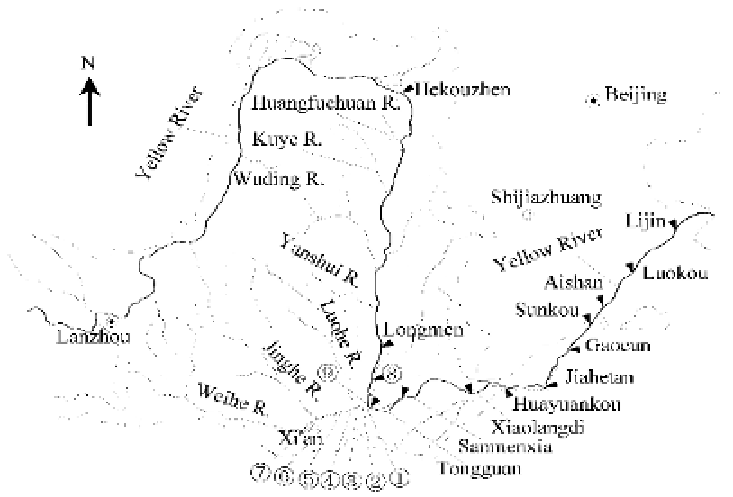Environmental Engineering Reference
In-Depth Information
3
UgR
Z
Fig. 5.26
Coefficient
k
and exponent
m
in the suspended load equation (5.52) as a function of
5.2.3 Hyperconcentrated Flow
5.2.3.1
Hyperconcentrated Flows
Hyperconcentrated flow is defined as the flow carrying hundreds of kilograms of sediment (say > 200 kg/m
3
or a volumetric concentration of about 8%). In the 1960s and 1970s hyperconcentrated floods occurred
almost every year in the tributaries and the Yellow River. Locations where hyperconcentration of
sediment were measured in the Yellow River basin are shown in Fig. 5.27. The concentration of a
hyperconcentrated flood that occurred in 1964 in the Kuye River, which is a tributary of the Yellow River,
was 1,500 kg/m
3
. A hyperconcentrated flood in 1974 in the Huangfuchuan River had a peak concentration
of 1,570 kg/m
3
(Qian, 1989). The sediment concentration of hyperconcentrated floods in the Yellow River
also was high. The concentration reached 933 kg/m
3
at the Longmen Station in 1966 and 911 kg/m
3
at
Sanmenxia in 1977 (Wan and Wang, 1994). Beginning in the middle of the 1980s, the sediment load and
Fig. 5.27
The Yellow River and its tributaries on the Loess Plateau which have frequently experienced hyperconcentrated
flow (Hydrological stations:
ķ
Diaoqiao;
ĸ
Huayin;
Ĺ
Chencun
˗
ĺ
Huaxian
˗
Ļ
Shawang
˗
ļ
Jiaokou
˗
Ľ
Lintong;
ľ
Shangyuantou;
Ŀ
Chaoyi)



Search WWH ::

Custom Search